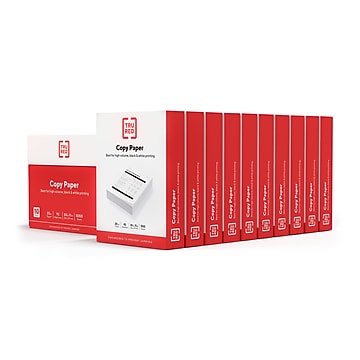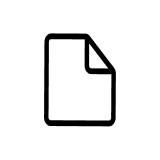JAM Paper
Related Searches
Trending now
JAM Paper & Envelope is a well-known and sought-after paper supplier with locations in New York and New Jersey. This family-owned and operated brand has produced a range of paper products and office supplies for over 50 years and is known for its quality and variety. Learn more about JAM paper and its features below.
What Are the Features of JAM Paper?
JAM paper’s distinct branding and bold color options set it apart from many other paper options. Some features that make JAM paper sheets a great choice for home or the office include:
- Environmental friendliness - JAM paper is commonly made of up to 20% recycled materials, so you can feel better about purchasing high volumes.
- Acid-free composition - Paper that is designed to be acid-free prevents discoloration and deterioration when exposed to sunlight and other elements.
- Durability - JAM paper is known to be durable and resistant to ink bleed-through.
- Color options - JAM offers a wide range of colorful paper sheets to choose from, including standard white, red, blue, silver, pink, yellow, gray, green and even translucent clear paper.
- Non-toxic ingredients - JAM paper is made to be safe for all users.
What Size Does JAM Paper Come In?
Paper sheets are measured in inches by width and length. When deciding on the right JAM paper size for you, consider your printing needs. Evaluate the paper size your printer can accommodate, as well as the envelope size you’ll be using if applicable. Also consider which size may be best suited for the type of document you’re producing, whether it’s a flyer, brochure, contract, etc.
Common sizes and capacities for JAM paper include:
- 8.5” x 11” (most common)
- 8.5” x 14” (legal size)
- 11” x 17” (tabloid size)
Which Weight of JAM Paper Should You Buy?
Paper weight is also a factor to think about when selecting which JAM paper to buy. The weight seen on your paper ream or in a product description refers to how many pounds 500 sheets of that paper weigh in its corresponding size. Paper weight can be a deciding factor in your purchase if you will be printing with it. Make sure the paper you buy is not too heavy for your machine, which could risk printer malfunction. Refer to your printer’s manual for the recommended paper weight. If you are not printing, use paper weight as more of an indicator of how thick the paper is. The thicker the paper, the more it will hold up to inks and paints, reducing the potential for bleed-through.






















































































